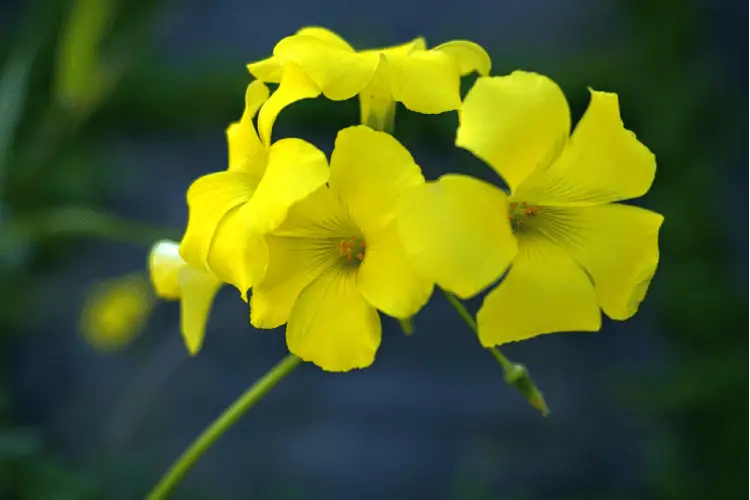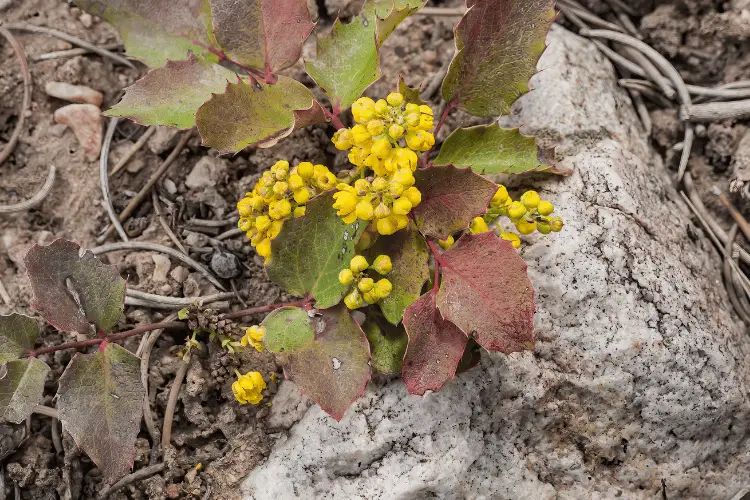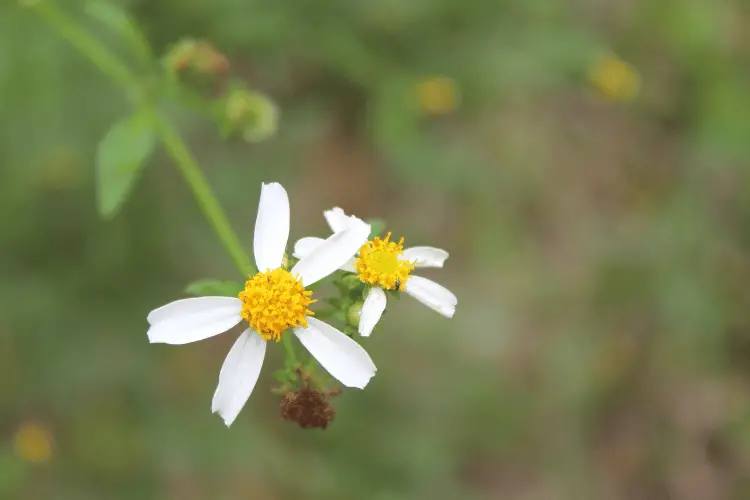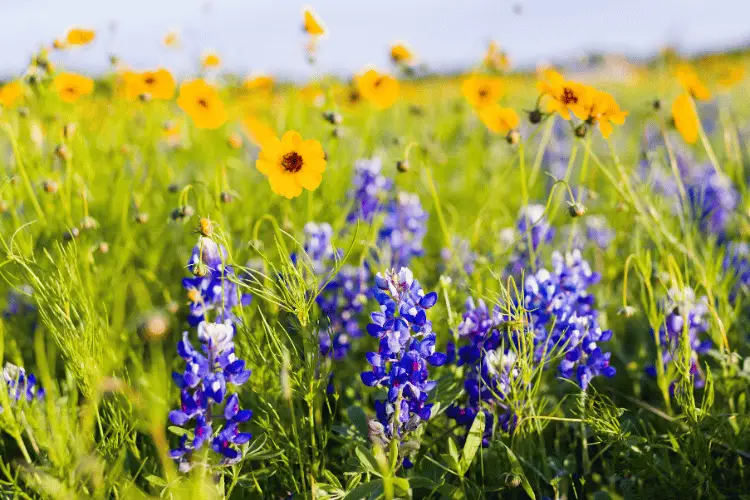We strive to provide you with authoritative, trustworthy, and expert advice. In doing so, the staff at texaswalkabout.com performs extensive research, editing, and fact checking to every post on this webiste. If you feel that this article can improve, please feel free to reach us at staff@texaswalkabout.com
There are countless species of flowers in Texas. From wild Mexican Hats to more tame sunflowers.
Each one has unique characteristics and growing conditions. The climate in the state can support the growth of all types of florae.
For that reason, it can be a little tricky to identify each flower in your garden. Some people like to rely on the color of the petals to tell plants apart.
Although, this is easier said than done. For instance, there are hundreds of blooms with yellow petals.
Because of that, depending on the color alone won’t get you far.
So, if you happen to stumble upon Texas yellow wildflowers that you can’t name, we can help you out. In this article, we’ll walk you through some of the flowers with golden petals.
We’ll also cover the best environment for these plants to grow.
Yellow Wildflowers in Texas
There are thousands of species of flowering plants in Texas that have yellow petals. So, to make your life a little easier, we’ve compiled a list of some of the most notable varieties.
1. Mesquite
- Common names: Honey Mesquite,
- Hardiness zone: 7-9
- Bloom time: March through May
- Sun exposure: Full or partial sunlight
The first flowering plant on our list is Mesquite. It’s a species of small, thorny shrubs in the Fabaceae family.
This plant has long, rounded branches with thick, feathery foliage. The leaves are thin, but there are plenty of them.
Because of that, Mesquite always looks full and dense.
At the beginning of March, you’ll start to see the plant flower. It’ll grow tiny petals that resemble little spikes.
On top of that, the seed pods that develop on the branches are also yellow. So, you’ll get a magical display of vibrant green with subtle hints of amber.
Moving on, Honey Mesquite doesn’t require much care. All you need to do is water it once or twice a week and it should grow rapidly.
2. Sour Grass
- Common names: Buffalo Grass, Hilo Grass, Johnston River Grass, Paspalum Grass, Sour Clover
- Hardiness zone: 3-10
- Bloom time: July through October
- Sun exposure: Partial sunlight
Sour Grass is a herbaceous perennial that blooms in mid-summer. It produces some of the most beautiful flowers in Texas.
They have five petals, and they’re all bright yellow. On top of that, Sour Grass plants have unique foliage.
The leaves grow in groups of three, which resemble a clover plant.
Other than that, this flora is completely edible. You can eat both the flowers and the leaves without worrying about side effects.
In fact, eating the plant may be good for you. That’s because it has a high concentration of vitamin C.
Finally, the flowers get their name because they have a distinct lemony taste.

3. Harvest Lice
- Common names: Agrimony, Small Flowered Agrimony
- Hardiness zone: 6-9
- Bloom time: June through September
- Sun exposure: Full sunlight
When you look at a Harvest Lice bush, you’ll notice that it has hundreds of tiny leaves. Because of that, it can be a little challenging to find the flowers.
Although, if you examine the plant closely, you’ll notice small buds growing all over the place. Most of the time, the flowers will develop in clusters.
This makes them appear larger than they are.
Moving on, Harvest Lice has quite a few medicinal uses. It could treat issues with the digestive system, liver, kidneys, and even gallbladder.
Finally, this plant prefers living in dry environments. That means you won’t have to water it all that often.
4. Prickly Pear Cactus
- Common names: Opuntia, Nopal
- Hardiness zone: 7-10
- Bloom time: May through July
- Sun exposure: Full sunlight
Many of us are familiar with prickly pear plants. They produce delicious fruit that comes in a spiky protective coating.
Yet, few people know that this flora also blooms flowers in the spring. As soon as May comes around, yellow petals pop up all over the plant.
While these may be incredibly beautiful, they’re also dangerous. That’s because, at the end of the day, the flora is still a cactus.
So, if you get too close, you may get a few uncomfortable stings.
To top it all off, this plant has a few health benefits. A prickly pear cactus can help with diabetes, high cholesterol, and obesity.
Some people even use the flora as a cure for hangovers.
5. Bird’s Foot Trefoil
- Common names: Eggs and Bacon, Birdsfoot Deervetch, Lotus corniculatus
- Hardiness zone: 4-8
- Bloom time: May through September
- Sun exposure: Full sunlight
If you grew up around livestock, then you’re probably familiar with Bird’s Foot Trefoil. This plant is one of the most popular forage options in Texas.
That’s where the name Eggs and Bacon comes from. It’s because the plant has non-bloating properties that can keep cattle in tip-top shape.
Besides that, this flora grows stunning little flowers with yellow petals.
Moving on, Trefoil is an exceptionally adaptive plant. It can grow almost anywhere, with minimal care.
Because of that, some gardeners use it as a form of erosion control. They plant the flora in sandy soil so that its roots can hold it together.
This will make growing other types of plants in the future much easier.
6. Creeping Barberry
- Common names: Creeping Mahonia, Oregon Grape, Oregon Holly, Mountain Grape
- Hardiness zone: 4-8
- Bloom time: April through June
- Sun exposure: Shade
If you’re looking for yellow flowers that fill up a large space, then Creeping Barberry may be the way to go.
These plants are procumbent, which means they can spread over a massive area in a short period.
Moving on, they have segmented leaves that grow spikes on the margins. That means this species can be a bit prickly.
Other than that, Creeping Barberries are one of the most resilient plants on our list. They can thrive in harsh environments with little to no water.
So, if you decide to grow these plants, you won’t have to put in much effort to keep them alive. Some gardeners don’t even water these flowers at all.
They rely on rainwater to keep the plants from drying out.

7. Desert Marigold
- Common names: Paper-Daisy, Baileya multiradiata
- Hardiness zone: 7-10
- Bloom time: March through November
- Sun exposure: Full sunlight
Marigolds are exceptionally popular all over the world for a few reasons. For starters, they grow stunning flowers.
The petals are paper thin, and they fold onto each other. This creates a magical display of fragile structures that sway in the wind.
Aside from that, Desert Marigold petals aren’t one solid color. Instead, the center of the flower is a deep amber shade.
As you travel up the petals, you’ll notice that the color fades out into a vibrant yellow.
That ombre effect gives the plants a more sophisticated appearance.
Moving on, Desert Marigolds are resistant to frost, heat, and droughts. For that reason, you can grow these florae in your garden or indoors.
Although, it’s usually best to plant them outdoors. That way, you can make use of their ability to repel pests like rabbits and deer.
8. Mohawk Weed
- Common names: Wild Oats, Yellow Bellwort, Perfoliate Bellwort
- Hardiness zone: 4-8
- Bloom time: April through July
- Sun exposure: Full or partial sunlight
Mohawk weed flowers are incredibly delicate and charming. They have about six petals that hide the stamen.
Even when they’re in full bloom, the flowers don’t open up completely. Instead, the top of the petals will bend slightly downwards.
This is to allow insects like bumblebees to enter and pollinate the plants.
These florae grow to about 15 inches in height. That makes them the ideal choice for ground covers.
They’ll provide a little shade without taking up too much space.
Besides that, each flower grows with a single leaf at its base. This helps provide the fragile petals with some protection from the sun.
The only catch is that Mohawk weed flowers need plenty of water to survive. That means you may have to water them two to three times a week.
9. Spanish Needles
- Common names: Beggarticks, Devil’s Pitchfork, Tickseed Sunflower, Bur Marigold
- Hardiness zone: 8-10
- Bloom time: July through October
- Sun exposure: Full sunlight
Spanish Needles are flowering perennials, which means they can live for a long time. They may lose their leaves and petals during the winter and fall.
Yet, as summer comes around, the plants will come back to life.
With the weather getting warmer, many buds will start to bloom on the stems. Typically, the flowers are an off-white shade with yellow disc centers.
However, these plants also come with yellow petals.
Besides that, Spanish Needles are crucial to our ecosystem. They function as the main source of food for insects, like butterflies and bees.
Lastly, these florae can grow pretty rapidly. You plant them in early spring, and by mid-summer, you have fully grown flowers.
For that reason, many gardeners consider this species slightly invasive.

10. Rock-Nettle
- Common names: Yellow Stingbush, Stickleaf
- Hardiness zone: 3-10
- Bloom time: May through August
- Sun exposure: Full sunlight
If you’re looking for a more exotic plant, then Rock-Nettle may be for you. From a distance, the five yellow petals resemble a striking star.
They’re broad with tapered ends that form a point at the top of each petal.
As you move closer, you’ll notice many hair-like structures coming out of the center. These are the stamens of the flower, which are responsible for reproduction.
When a soft breeze blows by, it causes the stamens to sway. Because of that, the flowers look like twinkling lights.
This is typically much more apparent in the morning than at night.
Other than that, these amazing flowers only bloom in full, direct sunlight. So, once a bit of shade comes by, the petals will close up to protect the plant.
Finally, you can find these flowers in the Big Bend area of West Texas.
11. St. John’s Wort
- Common names: Amber, Goat Weed, Hardhay, Hyperici Herba, Tipton Weed
- Hardiness zone: 5-9
- Bloom time: June through September
- Sun exposure: Full or partial sunlight
St. John’s Worts are open flowers with prominent stamens and long stems. The petals are yellow, while the top of the stamens are bright red.
This creates a wonderful display of bright colors.
Aside from that, the foliage of these plants grows close to the ground. So, not only will it provide shade, but that’ll also allow the flowers to shine on their own.
With vibrant shades, these florae can add a welcoming air to any space. Although, the red stamens are a warning sign.
St. John’s Worts can be toxic to animals like cattle, goats, and sheep. Yet, they can be beneficial to humans.
We’ve used the plants to treat mood disorders and various conditions like menopause.
12. Dandelion
- Common names: Lion’s Tooth, Irish Daisy, Blowball, Priest’s Crown, Yellow-Gowan
- Hardiness zone: 3-10
- Bloom time: May through October
- Sun exposure: Full sunlight
Most of us have seen many dandelions throughout our lifetime. Although, we’re probably more familiar with what they look like when they wilt.
These flowers start out with countless tiny yellow petals. They can last for several months until mid-fall.
Then, as the weather gets colder, the petals will shrink down and turn white. This gives us the iconic puffball shape that we’re used to.
When that happens, strong winds will be able to carry the flowers away from the plant. That way, dandelions can spread their seed without having to rely on insects.
To top it all off, dandelions are completely edible. You can eat all parts of the plant, including leaves, flowers, and roots.
When they’re fresh, these structures have an almost honey-like aftertaste. Because of that, it’s perfect for making tea, salad dressings, and even jam.
Although, as the plants age, the flavor will turn a little bitter.
Wrapping Up
If you’re after Texas yellow wildflowers, then you’re in luck. There are countless species of florae that grow amber petals.
Some of the most notable ones include Mesquite, Sour Grass, and Harvest Lice. Other than that, Creeping Barberries and Spanish Needles both have yellow flowers.
Plus, Mohawk weed, dandelions, and St. John’s Wort are also great options.
Finally, if you plan to plant one of these, it’s a good idea to check its growing conditions. Pay close attention to the hardiness zones and moisture needs.

Robert is a native Texan writer for TexasWalkabout, passionate about Texas culture and food, wearing cowboy boots daily. He interviews local pitmasters and chefs, tastes and reviews innovative dishes, and explores hidden gems and iconic landmarks. Graduating magna cum laude in Cyber Security from the University of Texas at San Antonio, Robert excels academically and professionally while also being knowledgeable in Texas history and culture. After living in Texas for over 28 years, he provides first-hand and trustworthy information for all your Texas needs!

